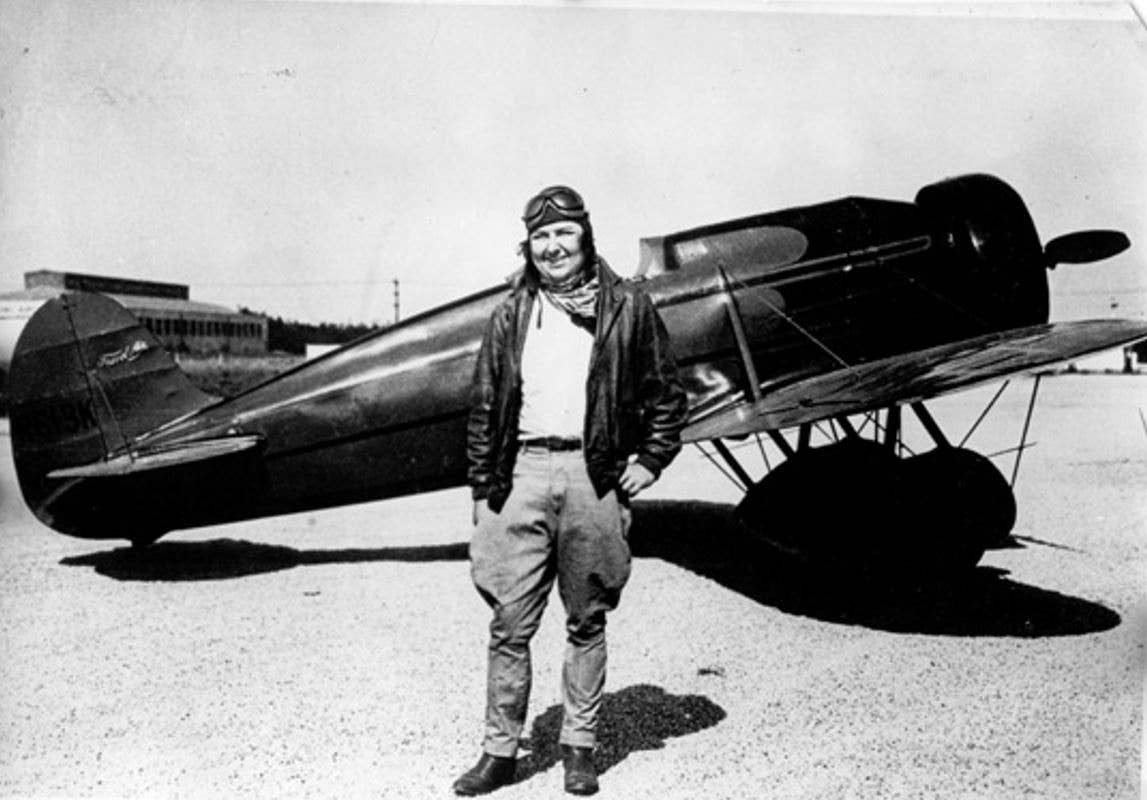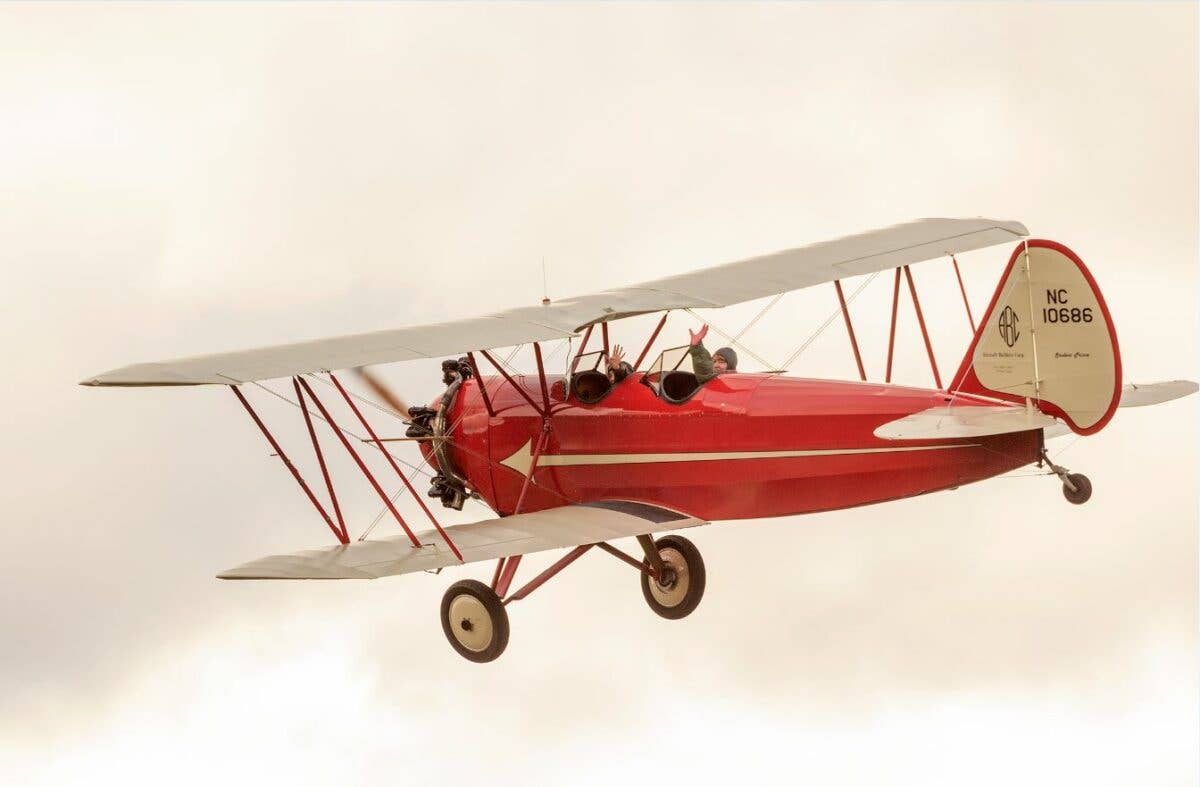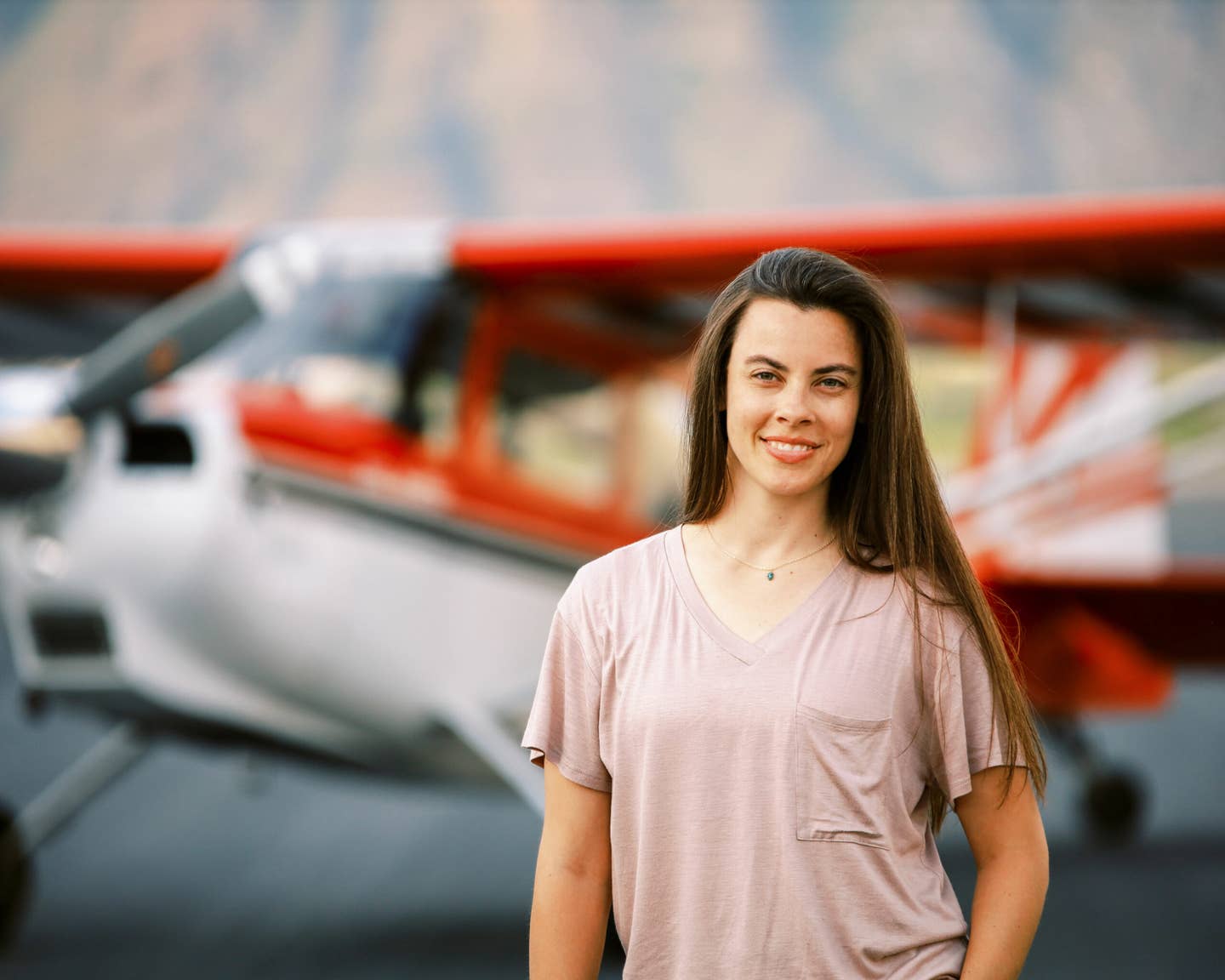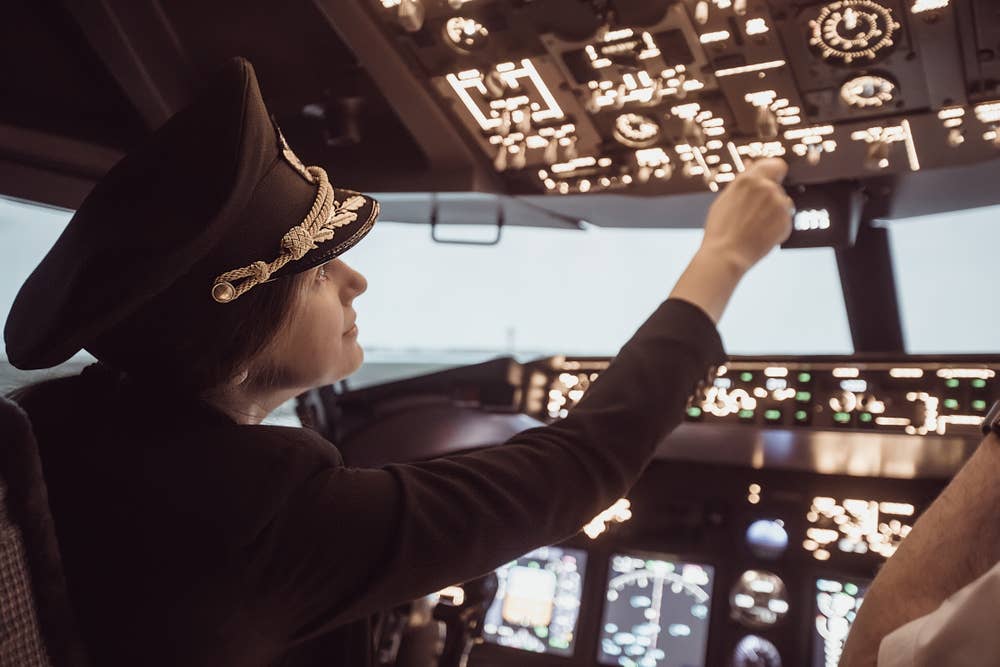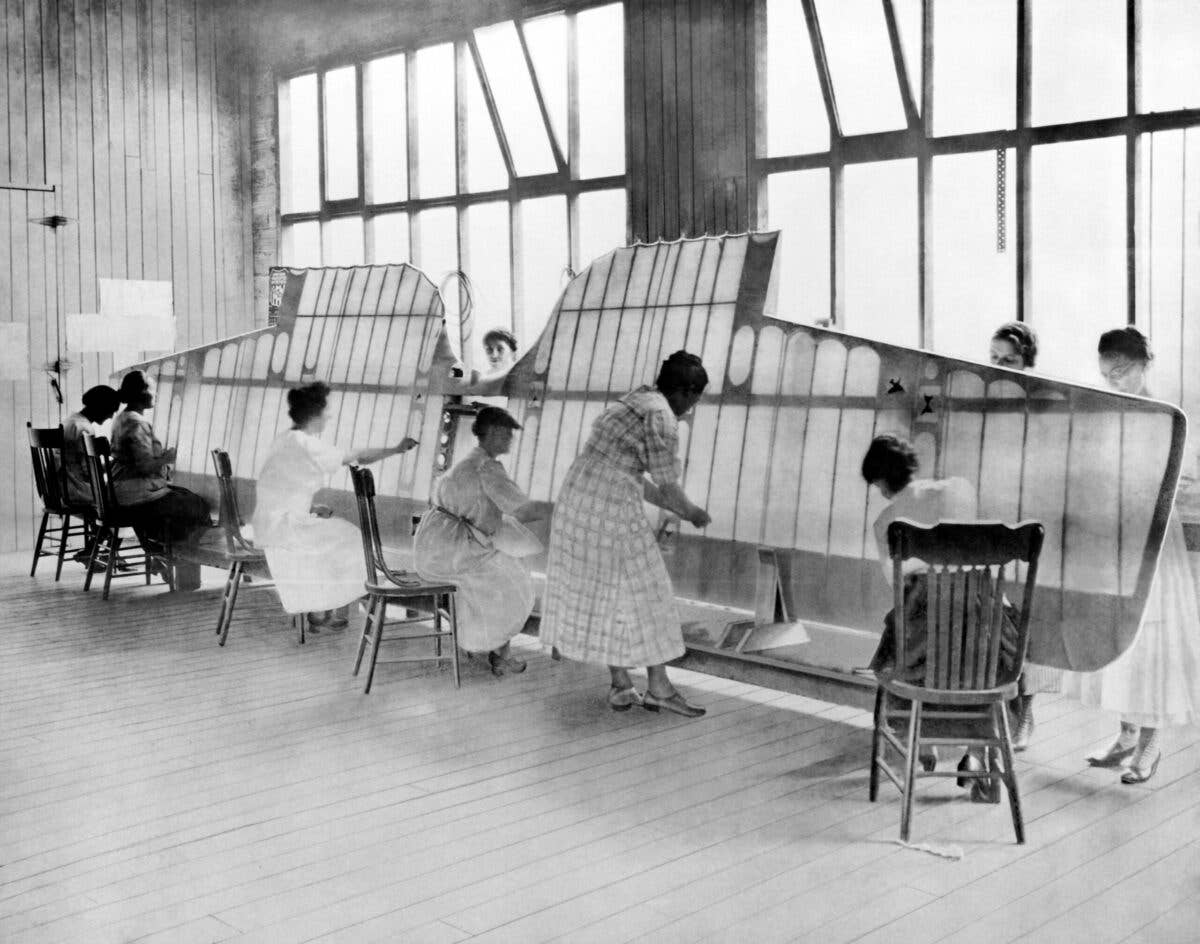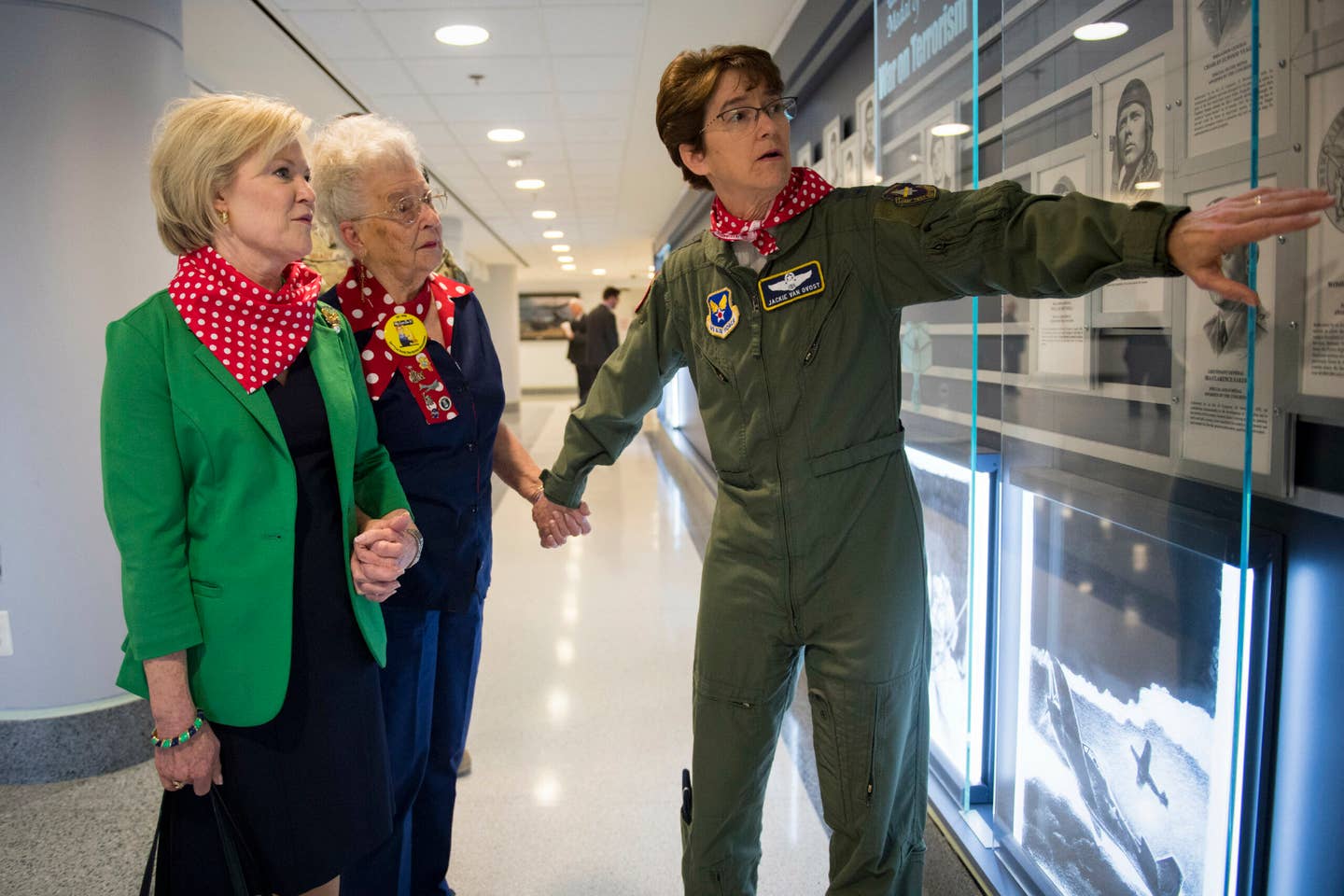Women in Aviation Advisory Board Gives the FAA ‘A Flight Plan for the Future’
The plan calls for a systems approach to remove a web of barriers for women in aviation.
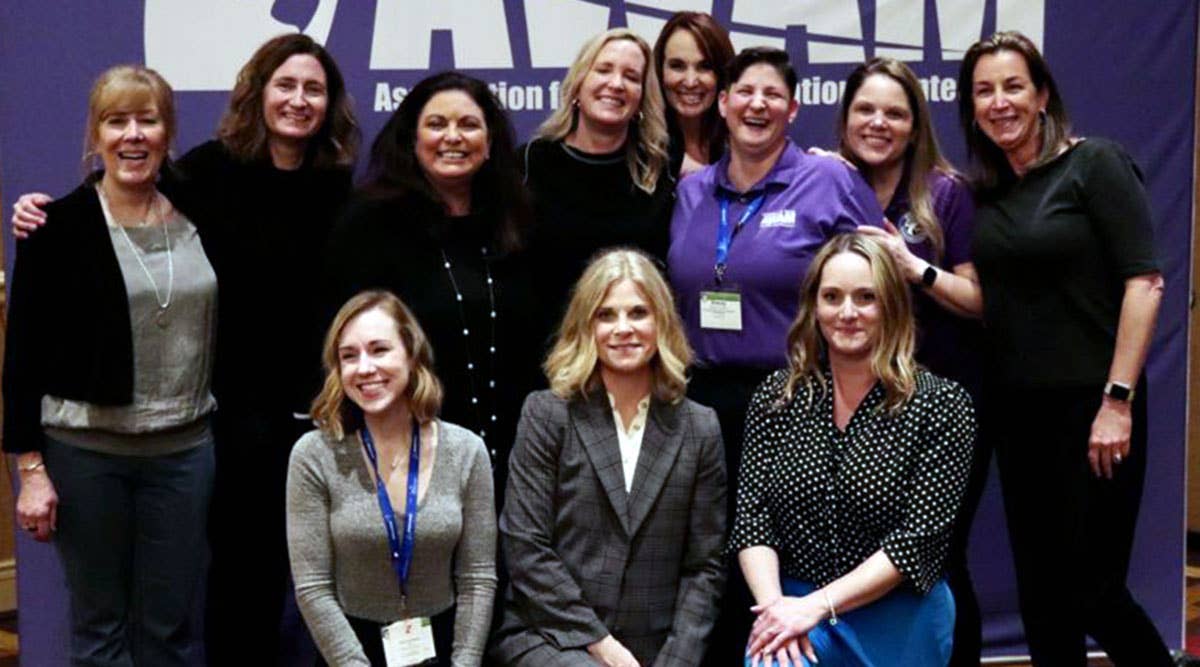
Members of the Women in Aviation Advisory Board celebrate fellow WIAAB member Stacey Rudser (top row, third from right) following her public naming as president of the Association for Women in Aviation Maintenance at the recent Women in Aviation International conference. [Courtesy: Rebecca Lutte]
Crystal Barrois, manager of aircraft transactions and an A320 first officer for Delta Air Lines, narrated the different stories of two young girls with a passion for aviation Monday during the final meeting of the FAA Women in Aviation Advisory Board (WIAAB).
In the first story, Barrois describes an aviation industry that is not designed for, nor friendly to women—and a greater society ill-equipped to support girls and women who have a passion for flight. Despite the challenges, this woman sticks with it because she loves to fly, Barrois said. The story ends when the woman, now an airline pilot, has a child. Unable to balance the responsibilities of work and caregiving, and feeling overwhelmed, alone, and unsupported, she gives up her years of hard work and leaves the industry “because it’s just too hard,” Barrois said.
In the second story, Barrois presents a futuristic model of an industry, education system, and culture providing support, encouragement, and financial assistance—from toddler age to retirement—to a woman aspiring to work in aviation. The story ends with the woman becoming a chief pilot, representing her fellow pilots at contract negotiations, and finally becoming senior vice president of flight operations for her airline. “She feels supported and included, and is able to serve her airline until she retires at age 65.”
Through these stories, Barrois, a member of the WIAAB, depicts the Barriers Timeline Model, a web of interconnected, multi-layered obstacles, developed by the board and described in its final report to the FAA: “Breaking Barriers for Women in Aviation: A Flight Plan for the Future.” As seen in the second story, the model also demonstrates opportunities to leverage meaningful change.
“The Flight Plan for the Future is the how-to guide to tapping into 50 percent of the population—or women—that will be crucial to…the sustainability, profitability, safety, and innovative success of our industry,” Barrois said.
"Women are essential to the continued safety, innovation, and success of this industry.”
Steve Dickson, FAA administrator
In successive presentations during a YouTube livestream, various members of the 30-member, all-women board—chaired by former U.S. Air Force Secretary Heather Wilson—joined Barrois in presenting a snapshot of the 70-plus page report and its 55 recommendations. The board concluded its meeting by voting unanimously to approve the report, “subject to technical and conforming changes.” The full report will be delivered to the FAA and Congress in the next week or so, and at some later date will be made public.
Appointed 22 months ago by then-U.S. Secretary of Transportation Elaine L. Chao to develop strategies surrounding the education, training, mentorship, outreach, and recruitment of women to the aviation industry, the board’s recommendations are structured as calls to action to the FAA, Congress, the Department of Transportation, and the aviation industry.
“There’s no one person or entity responsible for enacting change. It will take us all…working together to break down all of the barriers that exist for women today,” Barrois said.
Central to creating the “Flight Path for the Future” was first identifying the problem. As aviation industry professionals themselves, the WIAAB members are all too familiar with the gender gap in the industry.
The Numbers Tell a Story
According to Rebecca “Becky” Lutte, WIAAB member, associate professor/researcher at the University of Nebraska at Omaha’s Aviation Institute, and author of Women in Aviation: A Workforce Report 2021 Edition, the gap is significant. The greatest gender disparities exist in the fields of aviation maintenance technicians (2.6 percent female), airline transport pilots (4.6 percent female), and in senior leadership positions (3.0 percent female). Still underrepresented—but in greater numbers—women make up 11 to 20 percent of aerospace engineers, aviation higher education faculty, airport managers, air traffic controllers, and dispatchers.
Perhaps even more concerning than the low numbers of women in the industry is the “flatline effect” of women’s growth in the industry, Lutte said. While the actual number of women has increased over time, which is a positive, the percentage of women represented in the industry, or each job segment, is inconsequential, she said. “[For example] over a span of 60 years, the percentage of women commercial pilots has changed at a rate of about 1 percent a decade and mechanics have increased at about half that rate.”
These numbers, compounded with the need to grow and diversify the industry to address increasing workforce demands, prompted the establishment of the WIAAB. In his welcoming remarks to the board Monday, Steve Dickson, FAA administrator, emphasized the importance of the board’s work to enhancing the safety and effectiveness of the aviation industry.
“As the premier aviation safety authority in the world, the last thing we at the FAA can afford is groupthink,” he said. “Diversity makes us stronger, it brings new perspectives, increased innovation, and frankly, it makes for better decisions as well. Women are essential to the continued safety, innovation, and success of this industry.”
The Culture Challenge
According to the WIAAB report, a chief hindrance to further diversifying the aviation industry is a negative workplace culture for women. Speaking at Monday’s meeting, Lindsey Dreiling, WIAAB member and executive director of aviation strategy at Kansas State Polytechnic, said the board looked at current research and reached out to women in the industry to determine the reasons behind the large gender gap.
“What we found is culture was and is a barrier throughout each stage of the journey for women in aviation,” she said. “Over and over…these studies and surveys of women in aviation all pointed to challenges with the workplace culture. This included implicit gender discrimination and bias, and also sexual harassment issues.”
A 2018 survey conducted by Women in Aviation International (WAI) of its members supports this finding and will be included in the supporting materials delivered to the FAA with the WIAAB report. Of the 620 WAI members who completed the survey, 71.5 percent reported they had been subjected to sexual harrassment in the aviation workplace or another professional aviation setting, as reported in the Aviation for Women Magazine (2019). Lutte was on the volunteer task force that conducted the survey.
“There’s no doubt, the research is overwhelming in evidence that bias, discrimination, sexual harassment, are clearly a deterrent to the ability to recruit, retain, and advance women…We’ve got plenty of evidence to show that, unfortunately,” she said in an interview with FLYING.
According to Dreiling, other studies identified bias and discrimination of women in aviation that ranged from being overlooked for opportunities, not being provided stretch opportunities to advance their careers, having their ideas dismissed or misattributed to someone else, and being viewed as overly aggressive, among others. She cited the International Aviation Womens Association’s (IAWA) 2019 study, Soaring Through the Glass Ceiling, where two-thirds of the respondents said they felt they had been treated differently because of their gender and 40 percent felt that their voices were not heard in the industry.
A Systems Approach
In addition to the negative workplace culture interwoven throughout the industry’s job segments, the WIAAB also researched challenges related to recruitment, including economic factors and building awareness of aviation opportunities; retention and advancement, including mentoring and professional development; and the need for more gender-specific data.
“We believe it’s a systemic issue that requires a system-wide approach to solve it,” Lutte said.
Bobbi Wells, vice president for safety and airworthiness for FedEx Express and past president of IAWA, would agree. Because aviation was historically populated by men, it was a system designed for men, she said at the meeting. The culture of this system includes language, uniforms, policy, ceremonies, things that can be seen externally, as well as internal values, beliefs, and behaviors of the people who participate in the culture.
“This doesn’t mean it was a system designed to exclude women. However, because of that system design, what it said to women was, come on into aviation and you have to find a way to fit in, rather than you’re welcome, you’re valued, we need you. Those are all elements we must change.”
Recommendations for Change
The board’s 55 recommendations include calls to action that address culture, retention and advancement, recruitment, and improving data collection.
Culture-related recommendations include implementing gender neutral and/or inclusive language across the indusry, providing uniforms that fit regardless of a person’s gender or build, creating an industry-wide reporting program to address bias, discrimination and sexual harassment, establishing enhanced FAA medical process information and reporting procedures for inappropriate medical exam actions, and increasing the visual representation of women in internal and external communications, to name a few.
With regard to retention and advancement, the board calls on industry members to provide paid parental and family leave, childcare options, schedule flexibility and accommodations, mentoring programs for women, and to create communities for support for women and other underrepresented groups, as well as professional development programs, among others.
Recruitment recommendations include establishing recruitment offices at airports and high school to post-secondary pathways, increasing the number of internships and field experiences, creating a one-stop-shop virtual resource center for people interested in aviation careers, and others.
The board’s data recommendations call for an expansion of the FAA U.S. Civil Airmen Statistics to include reporting on gender-specific and racial/ethnic data; industry-wide annual public reporting/tracking of data; a Department of Transportation annual report on workforce data and pay parity, and more.
The board also suggests that a permanent women in aviation advisory committee be established, to ensure that its recommendations are implemented and that their effectiveness is evaluated on an ongoing basis.
“We [WIAAB] officially sunset when we hand the official report over [to the FAA]…but it certainly doesn’t mean that we won’t be pushing for the implementation of these recommendations,” Lutte said. “That effort will continue. The last thing anyone wants is for it to just be put on a shelf.”

Subscribe to Our Newsletter
Get the latest FLYING stories delivered directly to your inbox

